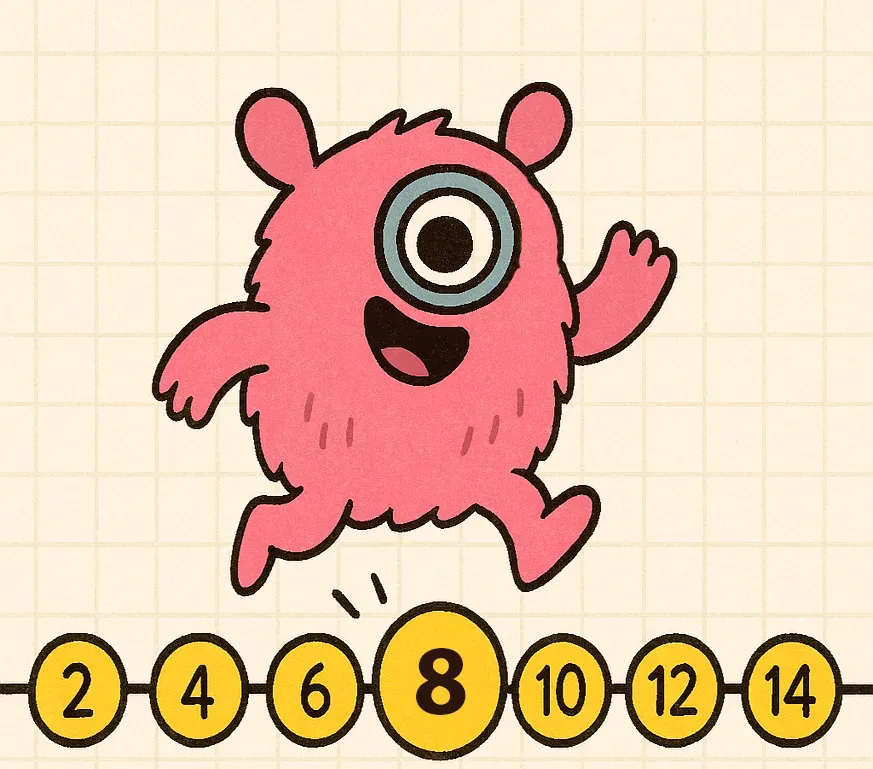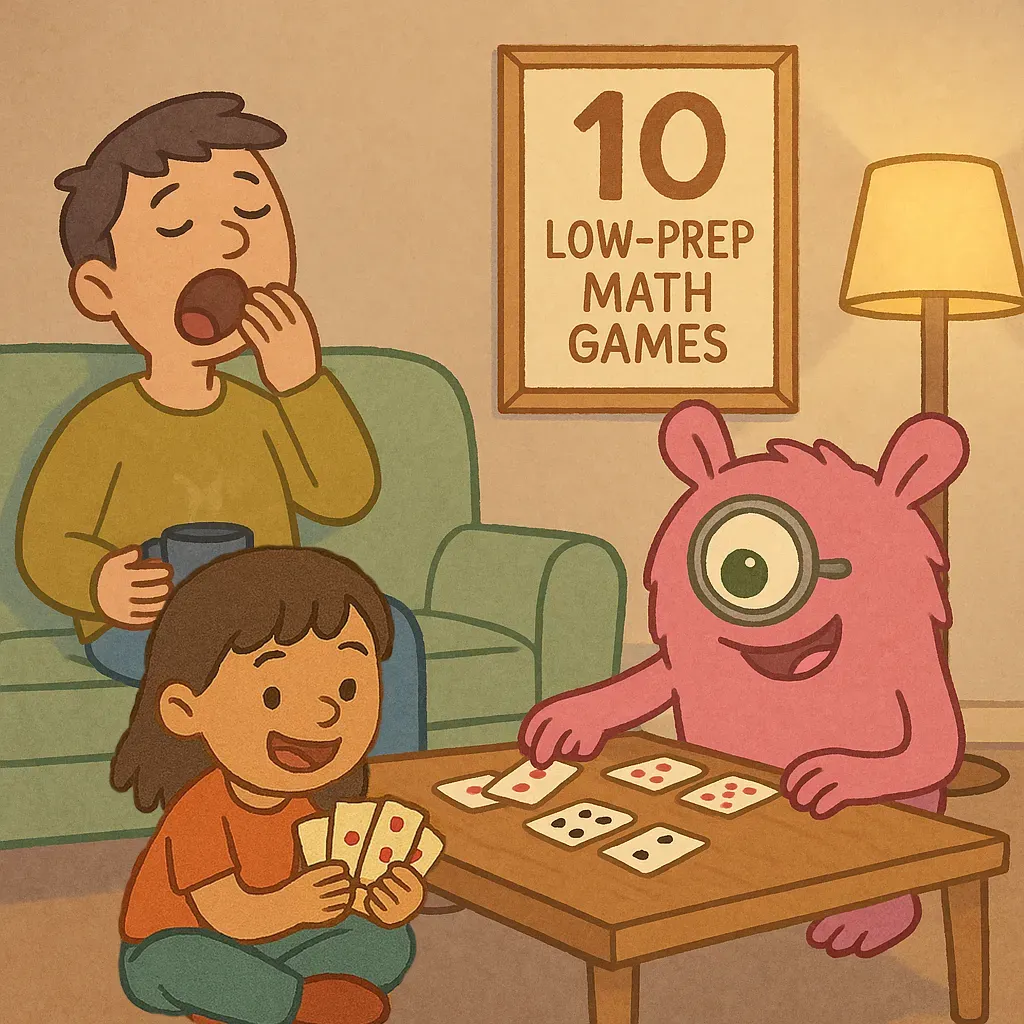Ever watched your child stare blankly at a math problem, unable to even begin?
If you've caught yourself thinking, "They're just not trying!" or "They're avoiding the work," pause right there. The reason might be something called inhibitory control, a lesser-known but crucial part of executive function.
What Exactly is Inhibitory Control?
Inhibitory control is the brain’s ability to suppress distractions, impulses, or irrelevant responses. Simply put, it's what helps kids pause, think clearly, and choose the correct first step in solving a math problem.
When inhibitory control is weak, kids aren't just distracted - they genuinely struggle to initiate tasks, particularly in math, where knowing which step to take first can make or break the entire solution.

The Science Behind the Freeze
Recent research highlights that inhibitory control issues are common in children with ADHD, Autism, and Dyscalculia. These kids often:
- Pause excessively before starting tasks
- Lose track mid-solution
- Become easily overwhelmed by multi-step problems
Additionally, another study found that children struggling with inhibitory control frequently performed lower in math assessments despite having average or above-average intelligence. It's not about their math ability—it's about managing cognitive load effectively.
Signs Your Child May Have Inhibitory Control Challenges
- Seem "frozen" even when you know they understand the material
- Frequently say, "I don’t know where to start!"
- Easily give up or become anxious with multi-step problems
- Make repeated mistakes due to impulsivity or distraction
- Struggle to follow multi-step instructions in general
Practical Ways to Strengthen Inhibitory Control at Home
1. Visual Checklists and Step-by-Step Guides
Using clear visual outlines can significantly reduce cognitive load, helping kids stay focused and organized. Try creating colorful, simple checklists that guide your child through each step of their math problems.
2. One-Step-at-a-Time Approach
Breaking math problems down into smaller, manageable steps can dramatically reduce anxiety and overwhelm. Have your child complete one small task at a time, celebrating each mini-accomplishment to encourage continued effort.
3. Movement and Brain Breaks
Surprisingly, physical activity can enhance inhibitory control and overall cognitive function (Hillman et al., 2019). Short movement breaks between math tasks can refresh your child's mind, improving their ability to tackle the next step without freezing.
4. Games That Build Inhibitory Control
Interactive games like "Simon Says," "Red Light, Green Light" (Squid games anyone?) or simple card games reinforce inhibitory control skills, directly translating to better math initiation and execution.
5. Model Thinking Aloud
Model your thinking process out loud. Show your child how you approach a problem step-by-step, verbalizing each decision clearly. This modeling can help your child internalize strategies and reduce the initial freeze.
6. Use Timers Wisely
Introduce timers for each step of a math problem, starting with ample time and gradually decreasing as your child's confidence builds. This helps your child practice starting quickly without feeling overwhelmed by urgency.
However, be cautious - if you see timers causing more anxiety to your child, relax it a little or even try other approaches.
From timers to talk-alouds, we cover it all in the Comprehensive ADHD Math Guide.

7. Create a Distraction-Free Zone
Set up a designated homework area free from distractions like TV, toys, and noisy surroundings. A quiet and consistent workspace can significantly enhance your child's ability to focus and start tasks.
8. Encourage Self-Reflection
After completing tasks, encourage your child to reflect on what strategies helped them start and finish. Ask open-ended questions like, "What helped you get started this time?" or "What was the most helpful step?" This reflection builds self-awareness and control.
9. Use Color Coding
Different colors for each step in a problem or checklist can visually cue your child, helping them quickly identify and begin tasks without hesitation.
Real-Life Strategies That Parents Swear By
Imagine math homework as climbing a mountain. If your child sees the entire climb at once, the overwhelming scale may cause them to freeze at the bottom. Instead, guide your child gently to the next rock, then the next, making each step manageable and enjoyable.
Many parents who changed their view from seeing their child's math struggles as laziness to recognizing it as a genuine inhibitory control challenge report less household stress, fewer arguments over homework, and notably improved math confidence and performance.
Inhibitory Control and Related Skills
Inhibitory control doesn’t exist in isolation; it closely interacts with other aspects of executive function like working memory and flexible thinking. Kids who struggle with inhibitory control might also have challenges with:
Understanding how these skills overlap helps you respond with patience and give your child the tools they need to succeed - not just in math, but in life.
Final Thoughts: It's Brain Wiring, Not Laziness
Your child isn’t choosing to freeze - they're momentarily stuck in a cognitive hurdle that their brain struggles to navigate. With patience, the right tools, and understanding, you can help them overcome inhibitory control challenges, transforming math homework from a daily battle into a routine they confidently approach.
Together, let's ensure every child reaches their full math potential.
FAQ: Inhibitory Control and Math
Q: Is inhibitory control the same as attention deficit?
A: Not exactly. Inhibitory control is a component of executive function, often impacted in ADHD, but it's specifically about suppressing automatic responses - not just paying attention.
Q: Will my child grow out of this?
A: Many children improve their executive function skills over time, especially with support, strategies, and practice. But some may need ongoing tools to succeed.
Q: What’s the best way to tell if inhibitory control is the issue?
A: Watch how your child starts (or avoids starting) tasks. If they struggle to begin even familiar problems or appear stuck at the start, this could be a sign.
Neurodivergent Math Learning: Strategies That Actually Work


